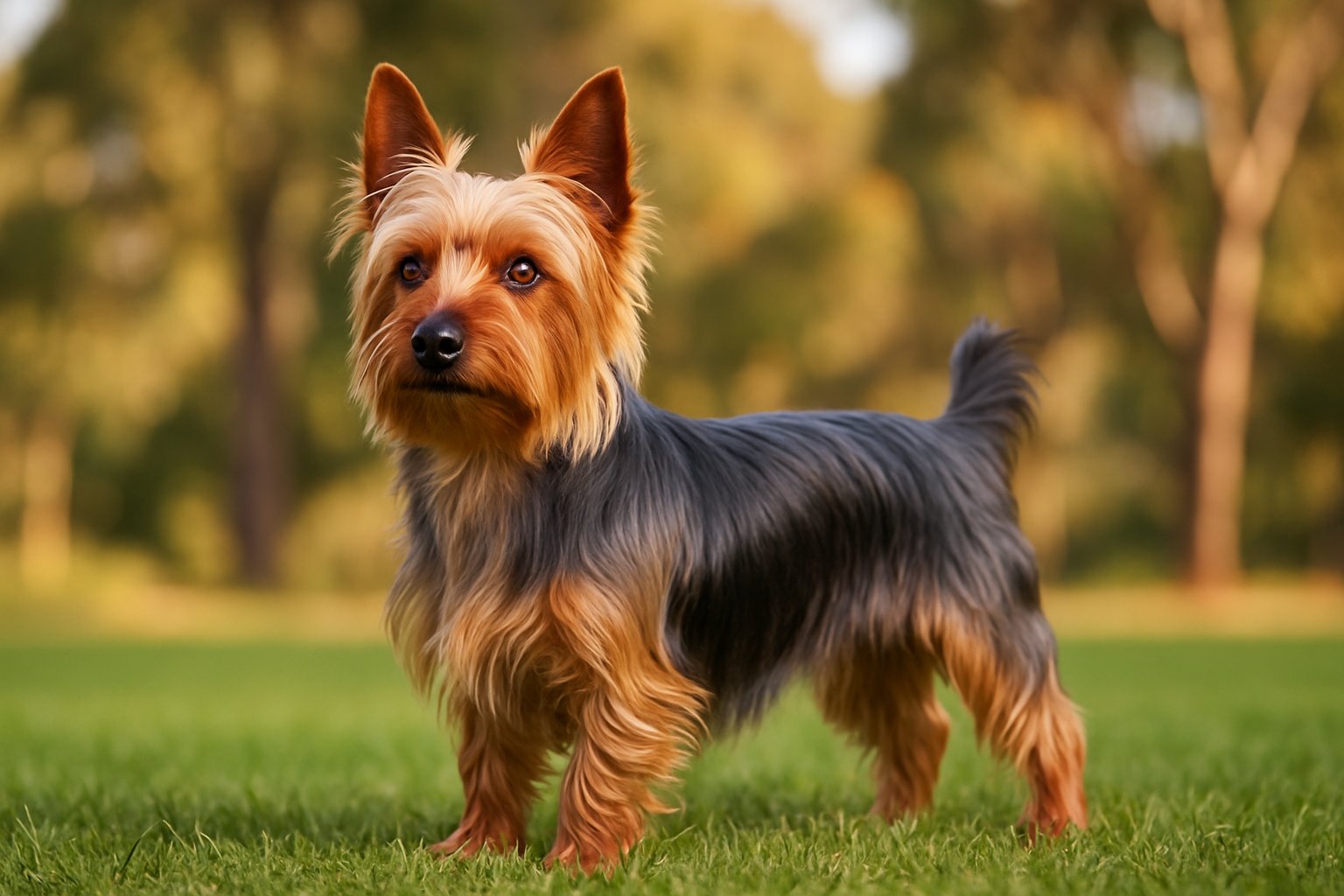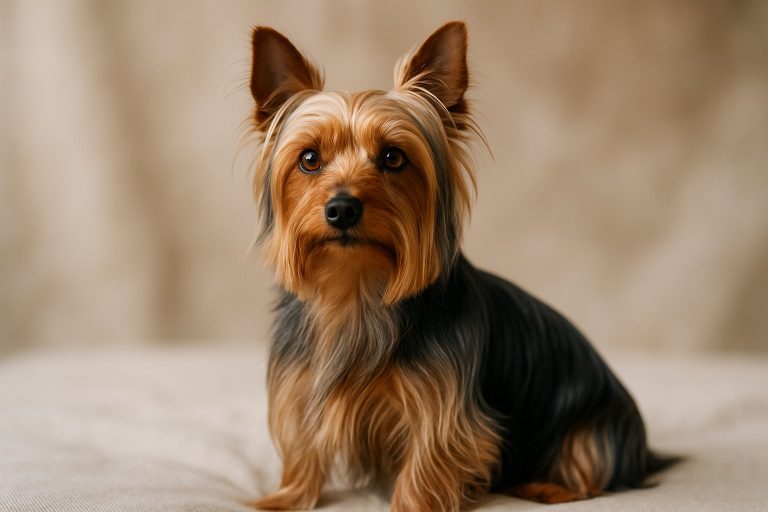Silky Terriers are small dogs with big personalities. You might have seen their shiny coats and playful energy, but there’s more to this breed than meets the eye.
Learning unexpected facts about Silky Terriers can help you understand if they are the right dog for your family. If you are curious about what makes these dogs special, reading further will give you a fresh perspective.
1. Silky Terriers were bred in Australia by crossing Yorkshire and Australian Terriers in the late 1800s.
- If you are wondering where Silky Terriers come from, their roots are in Australia. Breeders created them in the late 1800s by crossing Yorkshire Terriers with Australian Terriers.
- This mix was intentional. The goal was to develop a small dog that had the sturdy build of an Australian Terrier and the fine, shiny coat of a Yorkshire Terrier.
- By combining these two breeds, Silky Terriers gained traits like confidence, energy, and a playful spirit. Their silky coat is one of their most noticeable features, which is where the breed gets its name.
- Australian breeders wanted a smart, active companion. As a result, the Silky Terrier quickly became a favorite in cities and homes across Australia.
- You can find more about their origin and the breeding process that led to this unique dog on this detailed Silky Terrier breed profile and in this overview of breed characteristics.

2. They typically weigh between 7 and 10 pounds and stand about 9 to 10 inches tall.
- Silky Terriers are a small dog breed. Most adult Silkies weigh from 7 to 10 pounds and are 9 to 10 inches tall at the shoulder. Their size makes them easy to carry and handle.
- Even as adults, Silkies remain compact and light. This means you can often pick them up without trouble. Their small stature can also fit in apartments and smaller homes.
- Despite their small build, they have a sturdy frame. If you are looking for a toy-sized breed that is not fragile, the Silky Terrier may be a good fit. You can see more about their size and weight on this dog size chart and compare them to other small dog breeds like those listed at Primpaws Grooming Academy.
3. Silky Terriers have a distinctive silky blue and tan coat that requires regular grooming.
- When you look at a Silky Terrier, the first thing you might notice is its beautiful blue and tan coat. The fur is long, fine, and very soft to the touch. This silky coat is a key feature of the breed, making the dogs stand out from many others.
- The coat does not shed much, but it does grow quickly and can tangle easily. You need to brush your Silky Terrier a few times a week to keep the fur smooth and free from mats. Regular brushing also helps remove dirt and keeps their coat shiny.
- Many owners also trim the hair around the eyes and paws to help their dogs see better and stay clean. Bathing your Silky Terrier every few weeks will help keep their fur in top condition.
- Because of their unique coat, Silky Terriers often need more grooming than short-haired breeds. If you are not comfortable with this, you can take your dog to a professional groomer for help. These steps will keep your dog looking neat and healthy.
4. Despite their small size, they have a high energy level and need plenty of exercise.
Silky Terriers may look small and delicate, but they have a lot of energy. You might be surprised by how active they can be throughout the day. You will need to walk your Silky Terrier daily to help them feel balanced and happy. Playtime is also important. Games like fetch, hide-and-seek, or agility activities work well.
5. They are known for their friendly yet alert temperament, often making good watchdogs.
Silky Terriers have a cheerful personality that makes them fit well in most homes. They usually enjoy spending time with their families and like to be involved in daily activities. Despite their small size, you will notice that Silky Terriers are watchful and quick to react when something seems off. They are often the first to notice unfamiliar sounds or visitors.
6. Silky Terriers can be trained but sometimes ignore recall commands if something else catches their interest.
- Silky Terriers are intelligent and can learn commands quickly. You can teach them basic obedience, such as sit, stay, and recall. Training sessions often work best when you use positive reinforcement.
- However, Silky Terriers were originally bred to hunt small animals. This means they can have a strong chase instinct. When something interesting, like a squirrel or bird, runs by, your Silky Terrier might ignore your recall command.
- Even well-trained Silky Terriers may run off in open areas if distracted. This is a common issue for the breed, and other terrier types as well. Consistent training is important to improve their response.
- If your Silky Terrier ignores you during recall, try to practice recall in safe, fenced spaces first. Keep sessions short and add distractions slowly. For more information, read about recall problems in Silky Terriers.
- Socialization and recall practice can help your dog pay more attention to your commands. Remember to always use a calm but firm voice and give treats for good recall behavior.

7. They adapt well to apartment living as long as their exercise needs are met.
- Silky Terriers can be a good fit for apartment life. Their small size makes it easier for them to move around in limited space. However, they need regular activities and playtime each day.
- You should plan for daily walks and active play indoors. Silky Terriers have moderate energy and enjoy staying busy. If their exercise needs are ignored, they may develop unwanted habits like barking or chewing.
- Access to nearby parks or dog-friendly areas helps keep them healthy and happy. As with most apartment-friendly dogs, meeting their need for movement is important. This is common among many breeds suited for apartment living.
- They can adapt to your routine if you stay consistent with walks and games. Providing some toys and chances to explore will also help your Silky Terrier thrive in an apartment.




